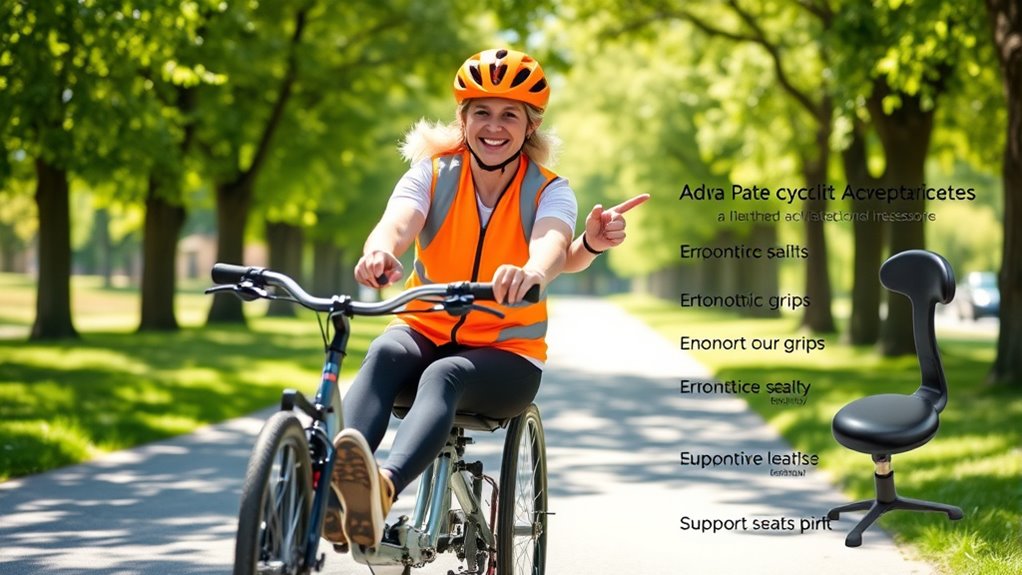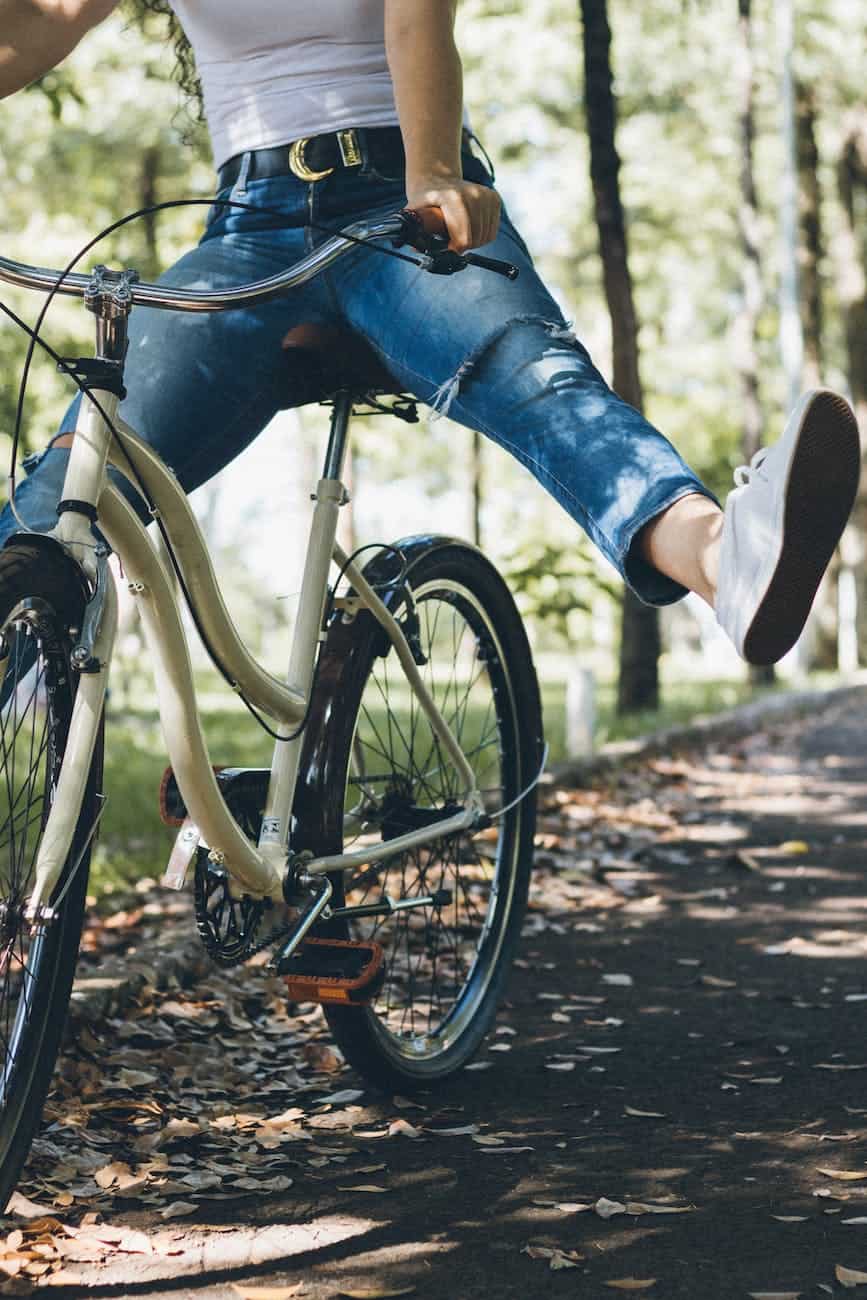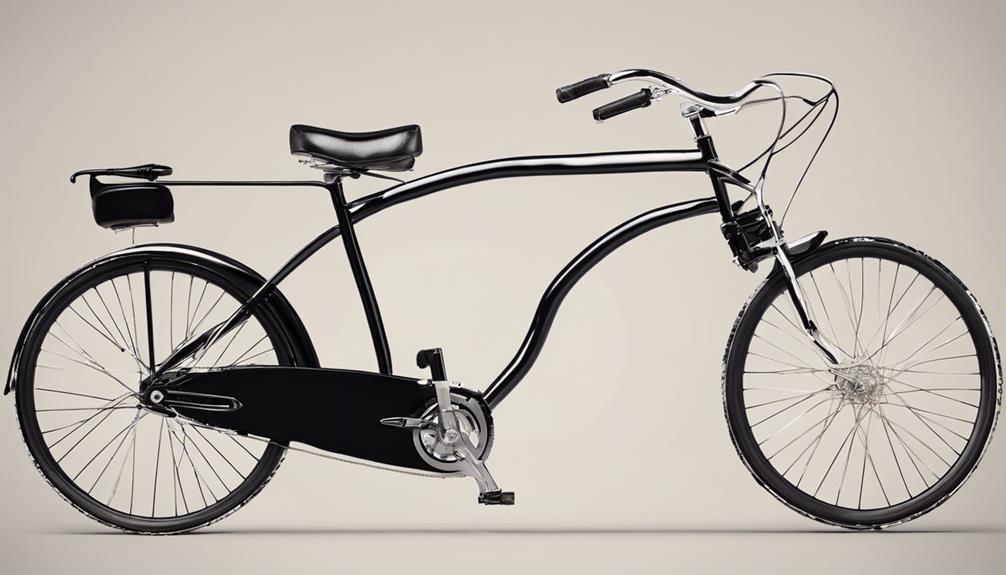To start as a new adaptive cyclist, establish a consistent, low-volume routine with fixed days to avoid overexertion. Focus on improving your technique by ensuring a proper bike fit, maintaining a steady cadence, and practicing smooth pedal strokes. Incorporate cross-training like swimming and strength exercises to boost overall fitness and recovery strategies. Using adaptive gear and technology can improve comfort and safety. Stay prepared mentally and logistically, and you’ll build confidence and skills—more tips are coming your way.
Key Takeaways
- Establish a consistent, low-volume training schedule with fixed days to build routine and prevent overexertion.
- Focus on proper bike fit and ergonomic adjustments to improve pedaling efficiency and comfort.
- Incorporate cross-training, strength, and mobility exercises to enhance overall stability and reduce injury risk.
- Use adaptive equipment and assistive devices tailored to individual needs for safety and optimal performance.
- Prepare mentally with visualization, relaxation techniques, and route familiarization to boost confidence and event readiness.
Establish a Low-Volume, Consistent Training Routine
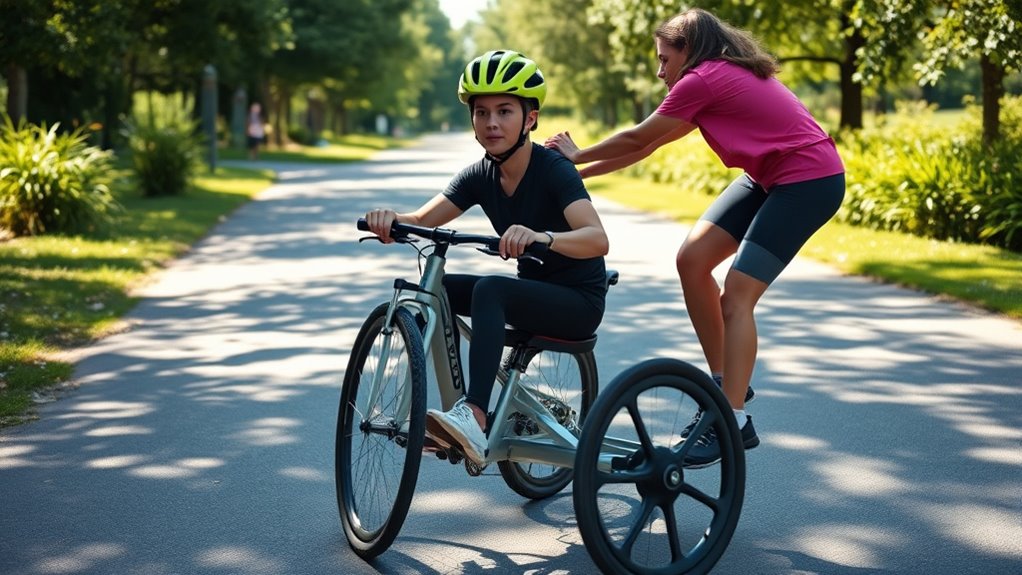
To build a solid foundation, it’s essential to establish a low-volume, consistent training routine. Focus on regular sessions rather than sporadic, intense workouts. Start with three structured rides weekly, adjusting their length as you progress. Keep training days fixed—perhaps Tuesday and Thursday for harder efforts, with Wednesday, Saturday, and Sunday for endurance. Use rest days like Monday and Friday for recovery and off-bike mobility or strength work. Track your adherence to the schedule, not performance metrics, to reduce pressure. If you miss a session, move it instead of skipping. Alternate hard days with easier rides in a 1:2 ratio to prevent overreaching. This approach helps you build sustainable habits while avoiding burnout as you develop your cycling base. Incorporating consistent training routines can also optimize your progress and prevent injury. Additionally, maintaining proper rest and recovery is crucial for long-term improvement and injury prevention. Monitoring your training volume can help ensure you stay within safe limits and avoid overtraining, especially when considering the importance of managing training intensity for optimal results. Being mindful of your training progression can further enhance your development while minimizing risk.
Focus on Technique and Pedaling Efficiency
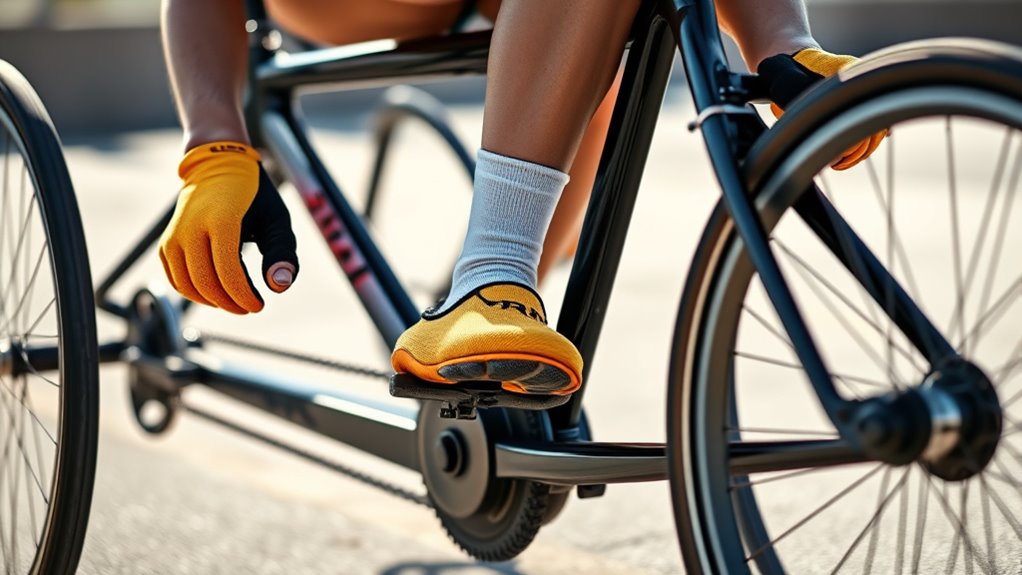
Focusing on your technique and pedaling efficiency can substantially enhance your cycling performance and comfort. Start by ensuring your bike fit is ideal—use ergonomic seat adjustments, handlebar positioning, and crank arm length to promote smooth pedal strokes and reduce strain. A proper cycling biomechanics approach can help optimize power transfer and reduce fatigue. Maintain a cadence of 75–90 RPM to lower joint stress and boost endurance. Practice even pressure distribution throughout the pedal stroke, and incorporate single-leg drills to eliminate dead spots. Engage your hamstrings and hip flexors with clipless pedals or toe cages during the upstroke. Additionally, being aware of utilitarian principles can inform your training choices and improve ethical decision-making during rides. Strengthen your core to stabilize your torso and prevent unnecessary movements. Keep your shoulders relaxed, align your spine neutrally, and engage your glutes during climbs. These adjustments will help you pedal more efficiently and comfortably on every ride. Incorporating pedal stroke analysis can further identify areas for improvement and refine your technique.
Incorporate Cross-Training and Recovery Strategies
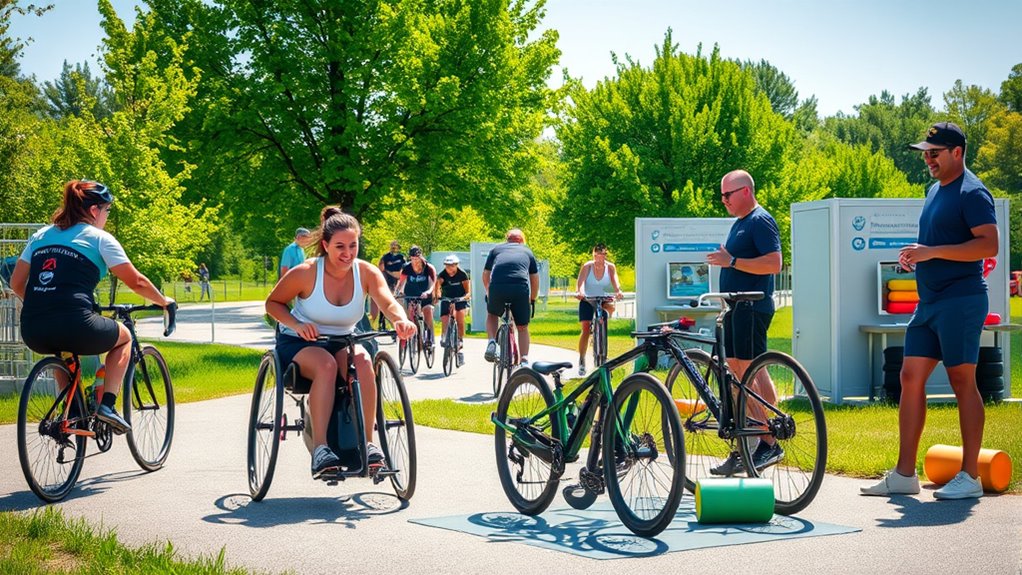
Incorporating cross-training and recovery strategies into your routine can substantially boost your cycling performance and reduce injury risk. Cross-training diversifies movement patterns and joint loading, helping prevent overuse injuries.
Adding cross-training and recovery techniques enhances cycling performance and minimizes injury risk.
Low-impact activities like swimming, rowing, yoga, or Pilates improve flexibility, balance, and breathing efficiency while strengthening muscles such as your core, glutes, and upper body, which support better posture and pedaling. Engaging in activities that promote muscle balance and coordination can further enhance overall cycling effectiveness. Additionally, understanding family dynamics and cultural heritage can contribute to a more holistic approach to training by fostering mental resilience and motivation.
Resistance training and HIIT circuits maintain cardiovascular fitness with less joint stress, and activities like Nordic skiing or elliptical workouts enhance endurance without bike-specific fatigue. Kia Tuning options like suspension upgrades can also help improve handling and comfort during cross-training activities. Incorporating dog breed knowledge can be beneficial for selecting appropriate training partners or understanding your dog’s needs during active recovery days. Recognizing the importance of personal mindfulness practices can optimize both training and recovery by reducing stress and improving focus.
Recovery strategies like active rest, compression therapy, proper nutrition, sleep, and foam rolling accelerate healing and maintain mobility. Incorporating mindfulness and stress management techniques can also optimize recovery and overall well-being.
Proper periodization and avoiding common mistakes ensure your training remains effective, safe, and tailored to your needs.
Use Adaptive Equipment and Technology Effectively
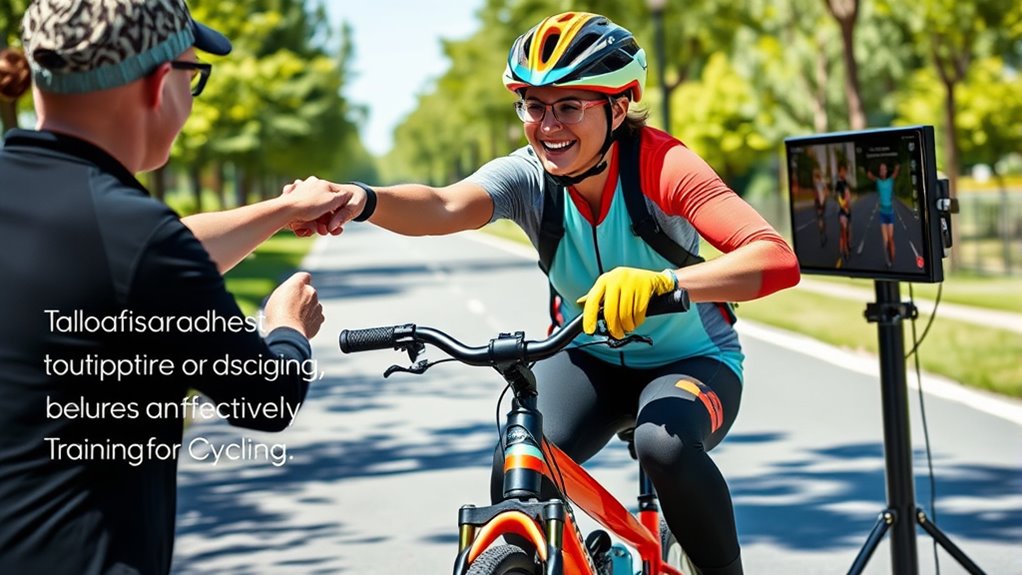
Using adaptive equipment and technology effectively can markedly enhance your cycling experience and safety. Choose the right adaptive equipment, such as specialized pedals, arm-powered bikes, or tricycles, to match your needs and improve stability and efficiency. Make sure your bike features ergonomic design and adjustable seating to prevent discomfort. Use assistive features like pedal assist systems to handle inclines and extend your riding range. Integrate safety features such as reflective materials and alert systems for better visibility. Properly fitted equipment and technology help prevent injuries and increase confidence. Regularly maintain your bike, checking brakes, tires, and mechanical parts. Seek professional guidance for fitting and customization options to ensure your bike supports your goals and provides a comfortable, safe ride. Incorporating adaptive equipment and technology can also help improve your overall cycling skills and confidence. For example, selecting a Vetted electric bike conversion kit with features like waterproofing and adjustable power output can significantly enhance your riding experience. Additionally, understanding the importance of appropriate fitting can ensure optimal comfort and safety during each ride. Being aware of trustworthy brands can further ensure the quality and reliability of your adaptive gear. Staying informed about innovative solutions can help you access the latest advancements tailored to your needs.
Prepare Mentally and Logistically for Events

Preparing mentally and logistically for your cycling events guarantees you’re confident and ready to perform at your best. Visualize race scenarios during training to build familiarity and boost confidence. Practice meditation techniques like body scans and breathwork to reduce stress and maintain focus. Use positive self-talk to stay motivated during tough moments. Incorporate relaxation methods such as aromatherapy oils to further support mental clarity and calmness. Set clear goals, including outcome, performance, and process targets for each stage of the event. Familiarize yourself with the route, terrain, and surfaces beforehand, and pack spare parts tailored to your adaptive bike. Coordinate with your support crew for communication and emergencies, and test your nutrition strategy in training. Confirm that event facilities accommodate your mobility aids, ensuring a smooth experience from start to finish. Additionally, being aware of privacy policies and how your data may be used can help you navigate online event information securely. Understanding nutritional needs related to your training and recovery can optimize your performance and endurance during events.
Frequently Asked Questions
How Do I Choose the Right Adaptive Cycling Equipment for My Needs?
When choosing adaptive cycling equipment, start by evaluating your physical limitations and cycling goals.
Consult healthcare professionals and explore online resources or communities for insights.
Consider your safety needs, like stability and support, and prioritize features such as adjustable seats, adaptive pedals, and safety accessories.
Test different bikes to find the best fit, and review maintenance and budget options.
This approach guarantees you select equipment that’s comfortable, safe, and suited to your individual needs.
What Are the Best Ways to Stay Motivated During Long Training Periods?
Imagine your motivation is a wild fire that could burn out any moment—so you need to stoke it constantly! You stay motivated by setting exciting goals, celebrating tiny wins, and mixing up your routes to keep things fresh.
Connecting with fellow cyclists, remembering your core purpose, and tracking your progress with apps make the journey feel unstoppable. Keep pushing, because every pedal stroke gets you closer to your best self!
How Can I Safely Modify Workouts for Mobility Limitations?
To safely modify workouts for mobility limitations, you should use adaptive equipment like recumbent bikes with low step-through frames and install stability aids such as outriggers.
Start with seated exercises to build endurance and gradually increase resistance.
Incorporate resistance bands and seated strength exercises to target muscles without risking balance.
Always consult with a physical therapist for personalized guidance, and prioritize safety by choosing traffic-free routes or stationary setups.
What Nutrition Strategies Work Best for Adaptive Cyclists During Training?
When it comes to nutrition during training, you should focus on balanced meals rich in complex carbs like whole grains and fruits for lasting energy.
Stay hydrated with plenty of fluids and electrolytes, especially during long rides.
Incorporate high-quality proteins for muscle repair, and time your meals to optimize performance and recovery.
Tailor your diet to your personal needs and training intensity, and always monitor how your body responds.
How Do I Find Local Adaptive Cycling Groups or Mentorship Programs?
Did you know over 60% of adaptive cyclists find community support boosts their confidence? To find local groups or mentorship programs, start with national directories like Bikes For Every Body or Challenged Athletes Foundation.
Check regional organizations such as Adaptive Adventures or CAF Cycling Club for rides and events. Reach out to these groups, attend meetups, or join virtual communities like #TeamCAF.
Connecting with experienced riders can make your adaptive cycling journey more enjoyable and inspiring.
Conclusion
Think of your training journey as tending a delicate garden. With consistent care, attention to technique, and the right tools, your skills flourish like vibrant blooms. Embrace cross-training and recovery as nourishing rain, and prepare mentally as a sturdy trellis supporting your growth. Just as a garden thrives with patience and dedication, so will your confidence and performance blossom over time. Keep nurturing your passion, and watch your adaptive cycling journey flourish beyond your wildest dreams.
